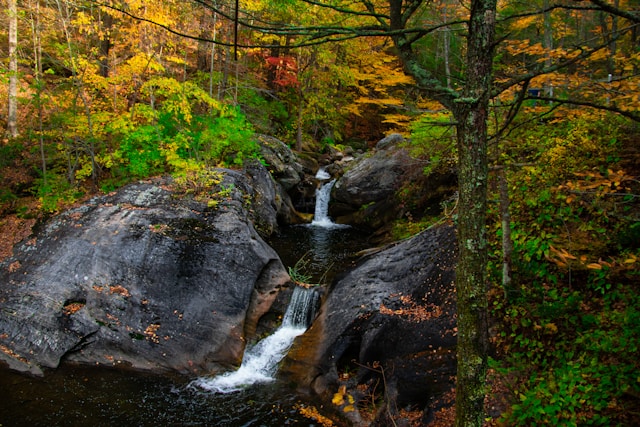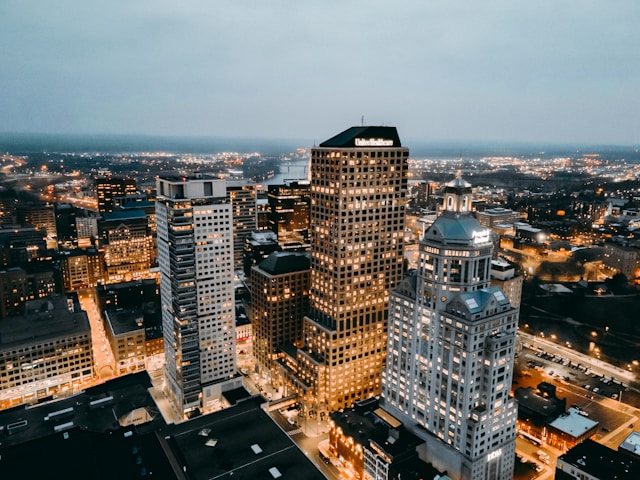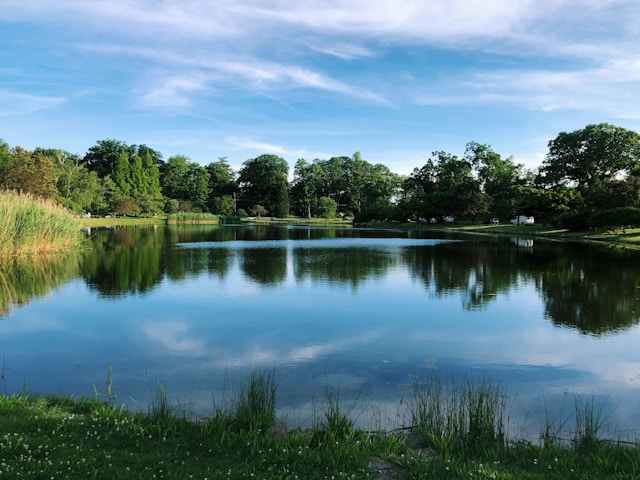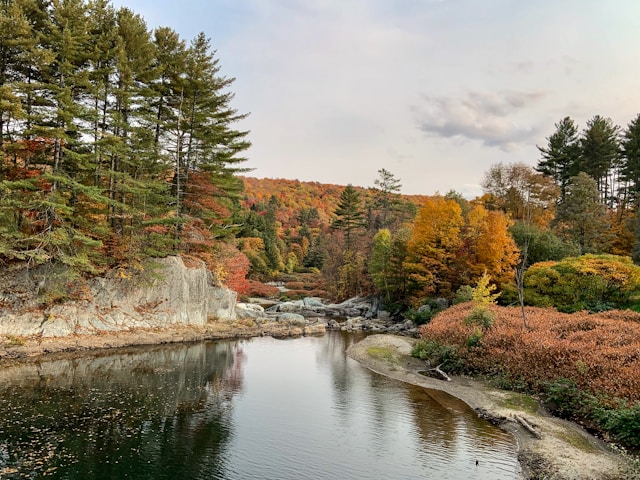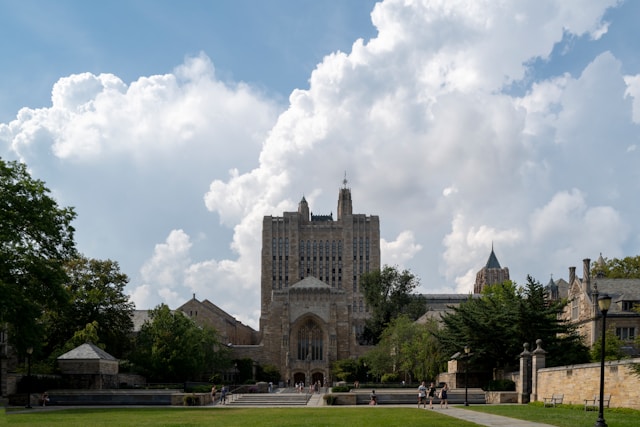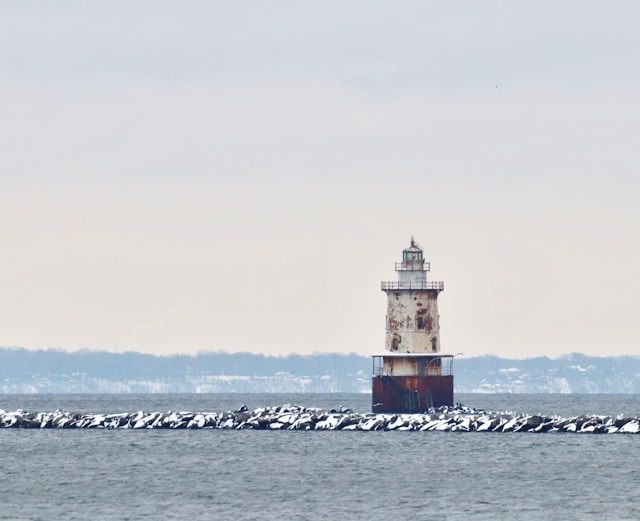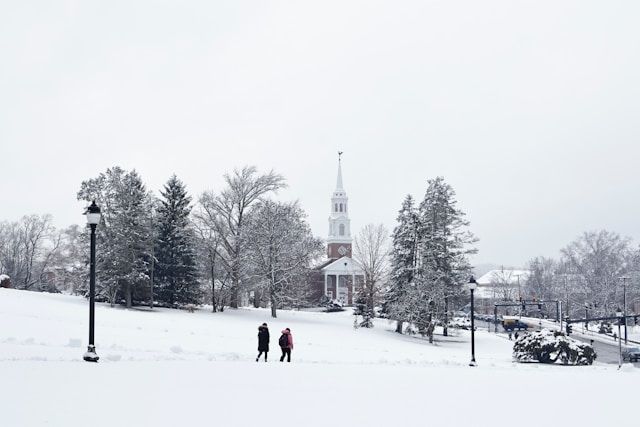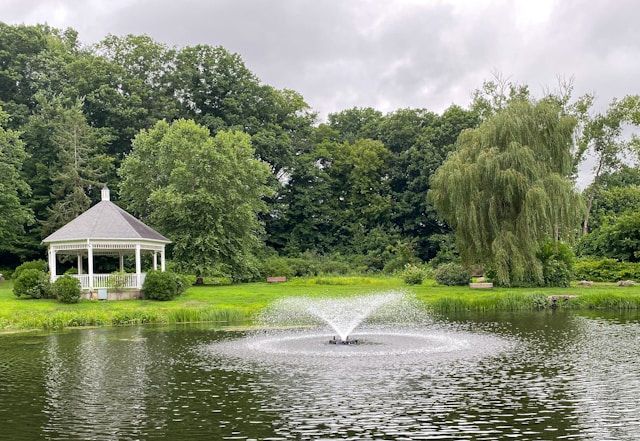Connecticut’s got a packed schedule this week—cultural festivals, outdoor escapes, and a bit of everything in between. You can dive into local history, wander scenic spots, or just soak up the energy from all sorts of seasonal events. Here’s a quick guide to what’s actually worth your time between August 10 and 16, 2025.
Looking for art? Craving something local to eat? Maybe you just want to spend a day on the water? There’s something for pretty much every mood and schedule. Each pick here shows off a different side of Connecticut, and honestly, you might just discover a new favorite corner of the state.
Explore top-rated stays with no booking fees and instant confirmation. Your dream trip starts here!
Start Exploring Now
1) Attend the International Festival of Arts & Ideas in New Haven
Head to the International Festival of Arts & Ideas in downtown New Haven for a mix of performances, talks, and community happenings. The festival runs through summer into September, and August brings some unique programs and sneak peeks.
Events pop up all over—inside theaters, out in public squares, and right on the New Haven Green. You can catch free outdoor concerts, hop on a guided walking tour, or listen in on speakers tackling current cultural topics.
It’s lively, but not so crowded that you’ll feel lost in the shuffle. For the best seats at big shows, showing up early definitely helps.
Prefer a quieter vibe? Check out the smaller indoor talks or workshops. Those often let you chat directly with the artists and presenters.
New Haven’s got plenty of restaurants and cafes within a short walk of most venues, so grabbing a bite before or after is easy enough.
Parking downtown gets tricky on festival days. Public transit or a nearby garage will probably save you some headache.
2) Explore the Connecticut Trolley Museum summer exhibits
Climb aboard restored trolley cars from the early 1900s and take a short ride—real motormen at the controls. The Connecticut Trolley Museum in East Windsor keeps the story of electric rail alive.
This summer’s run goes through September 1, 2025, with themed events and hands-on displays. You’ll see how trolleys worked, their impact on Connecticut, and the tech that powered them.
If you’re coming in August, the CT Summer at the Museum program gives free admission for Connecticut kids under 18 and one adult. Any extra adults can buy tickets at the door.
The museum’s mostly outdoors, so keep an eye on the weather. Trolley rides stick to a set schedule—last one usually leaves an hour before closing.
History buffs will love the exhibits, but kids seem to go for the hands-on stuff. You can peek into the maintenance shop, check out old photos, and chat with volunteers restoring the cars.
It’s about 20 minutes north of Hartford, so not a bad half-day trip if you’re in central Connecticut.
3) Join Connecticut Open House Day for free museum visits
On Saturday, June 14, 2025, Connecticut Open House Day rolls around for its 21st year. Over 200 spots across the state open their doors—museums, historic homes, farms, art galleries—many with free or cheap admission.
You can swing by places like the Connecticut Trolley Museum and the Vintage Radio and Communications Museum. Some even throw in little extras, like the Bruce Museum giving early birds a freebie from their shop.
Crowds get big at the popular spots, so showing up early is your best bet for easy entry and some quiet time with the exhibits. Schedules and hours aren’t always the same everywhere, so double-check before you go.
If you plan out your stops, you can hit a few places in one day. Sticking to one area makes it easier to maximize the free access.
4) Experience Pride celebrations across multiple cities
Several Connecticut towns are hosting Pride events this week. Stamford, Bethel, Ridgefield—they’ve all got parades, flag-raisings, and live shows in the works. The biggest celebrations in Hartford and New Haven wait until September, but August still brings plenty of energy, just on a smaller scale.
Stamford’s Pride stretches the whole month, with art shows, outdoor concerts, and family-friendly fairs. Evenings lean more adult, but there’s something for everyone. Local businesses jump in too, with themed menus and pop-ups.
Bethel and Ridgefield keep things a bit more low-key. Expect short parades, local music, and nonprofit booths. It’s easy to walk around, and the mood is relaxed.
Want to see what else is happening? The guide to Pride celebrations across Connecticut has the latest schedules. That helps if you’re thinking about bouncing between towns.
Parking near parades can be a pain, so early arrival or public transit is smart. Some events wind down earlier than you’d guess, so check times before heading out.
5) Visit the Mystic Seaport Museum for maritime history
The Mystic Seaport Museum in Mystic is the country’s biggest maritime museum—19 acres right along the Mystic River. You’ll find historic ships, working exhibits, and a recreated 19th-century seafaring village.
Step onto the Charles W. Morgan, the last wooden whaleship left, and get a sense of how crews lived for months at sea. The shipyard’s open, so you can watch craftspeople restoring vessels with old-school techniques.
Inside, galleries show off maritime artifacts, ship models, and navigation tools. Outside, there are boatbuilding demos and, depending on the season, sailing chances. Spend a couple hours or lose an entire day—it’s up to you.
Families will find plenty to do, but some areas have uneven ground. Weekends get crowded in summer; weekdays are a bit calmer.
If you’re into maritime history and want something hands-on (not just flashy displays), this place gives you a real look at America’s seafaring past.
6) Take a scenic boat cruise on the Connecticut River
Hop on a guided cruise along the lower Connecticut River and see the area’s natural and historic highlights. Boats usually leave from Essex, and your ticket often gets you into the Connecticut River Museum too.
You can sail on the Onrust, a replica of a 1614 Dutch trading ship, with both afternoon and sunset cruises on offer. Seats go fast in August, so booking ahead is smart.
Trips last one to two hours, gliding past marshes, little islands, and maybe even some local wildlife—ospreys, herons, that sort of thing.
For a quieter ride, try a weekday. Weekends fill up quick.
Prices change depending on the time and boat. Daytime runs hover around $40 per adult, with kid discounts. Sunset trips cost a bit more.
The river’s usually calm, but weather can change things up. Check the forecast before you go.
It’s a pretty chill way to see a slice of Connecticut that’s best from the water.
7) Enjoy wine tastings at local vineyards in Litchfield Hills
Litchfield Hills has a bunch of vineyards where you can taste wines in laid-back settings. Many are family-run, and you’ll often meet the owners or winemakers themselves. The rolling hills make a gorgeous backdrop.
At Hopkins Vineyard, you can sip estate wines while looking out over Lake Waramaug. The tasting room is easygoing, and staff are happy to chat about how the wines are made.
Haight-Brown Vineyard is Connecticut’s oldest farm winery, with tastings plus seasonal extras—guided hikes, stargazing, you name it. Weekends can get crowded, so showing up earlier is a good move.
Some spots join the Connecticut Wine Trail, making it easy to plan a tasting road trip and compare styles.
Food options are all over the place. Some serve cheese boards or team up with food trucks, others let you bring snacks. Always check hours—smaller vineyards may close up early on weekdays.
8) Discover art galleries and street performances in Hartford
Hartford’s got a mix of big-name art museums and smaller, independent galleries. The Wadsworth Atheneum Museum of Art rotates its exhibits, while places like Real Art Ways show off contemporary work from local and regional artists.
Street performers pop up in public squares and near cultural spots—think musicians, dancers, and visual artists on Pratt Street or in Bushnell Park, especially when events are on.
If you like having a plan, the Greater Hartford Arts and Culture Calendar lists upcoming shows, outdoor performances, and gallery openings. Handy if you want to tailor your visit.
Most venues are walkable downtown, but a few galleries are a short drive or bus ride away.
Admission fees depend on the spot. Big museums charge, but smaller galleries and street shows are usually free or donation-based, so you can see a lot without spending much.
9) Participate in food and craft fairs in Madison
Madison’s summer fairs are a great way to find local talent and flavors. The Madison Arts and Crafts Fair takes over Madison Green, with artisans selling pottery, woodwork, jewelry, textiles—you name it.
Food stalls serve up baked treats, seasonal produce, and ready-to-eat meals. You can grab small bites or stock up for later. Seating is limited, so if you want to eat there, plan ahead.
These fairs pull in both locals and out-of-towners. Parking near the green fills up fast; getting there early helps you snag a spot and wander before it gets packed.
If you like chatting with makers, you’ll get the chance. Most vendors are happy to talk about their craft and materials, and it’s a good way to learn more about the region’s traditions.
Everything’s outdoors, so weather can make or break the day. Bring sunblock or rain gear as needed, and check the event page for last-minute updates.
10) Hike the trails at Sleeping Giant State Park
There are over 32 miles of marked trails at Sleeping Giant State Park in Hamden. The ridgeline looks like a giant lying down—hence the name. Trails range from easy, flat walks to tough, rocky climbs.
The Tower Trail’s the favorite: about 1.6 miles each way, leading to a stone tower with sweeping views of central Connecticut and Long Island Sound. It’s a steady uphill on a wide gravel path.
For fewer people, try the Quinnipiac Trail or the Blue and Yellow Loop. They’re rougher and less traveled, so sturdy shoes are a must.
The main lot at 200 Mt. Carmel Avenue gets you close to most trailheads. On weekends, arrive early—locals and college students fill it up fast.
In summer, bring water and sun protection. Not much shade up on the ridge. In winter, you can snowshoe or cross-country ski on some trails.
Wildlife’s common—hawks, deer, sometimes more. Stick to the marked paths to protect habitats and avoid wandering off.
Tips for Planning Your Week in Connecticut
Public transit outside the big cities is pretty limited, so plan your routes carefully. Lots of summer attractions need advance booking, and August weather can swing from hot to stormy in no time. Prepping for those quirks can help you dodge delays and get the most out of your trip.
Best Ways to Get Around
If you’re planning to hop between towns, driving gives you the most freedom—just be ready for some traffic headaches, especially during weekday rush hours or summer weekends. Highways like I‑95 and I‑91 connect the main spots, but they can get jammed up.
Metro‑North trains run from New York City into southwestern Connecticut, hitting towns like Stamford and New Haven. Handy if you’d rather skip city driving and those annoying parking fees.
Local buses do run in cities like Hartford, New Haven, and Bridgeport. But honestly, you’ll find them less useful in rural areas where routes thin out. Rideshare apps are around in most busy places, though late-night rides in smaller towns can be a roll of the dice.
For coastal trips, the Shore Line East commuter rail links New Haven to places like Madison and Old Saybrook. It’s a solid choice for shoreline travel if you want to dodge I‑95 traffic.
How to Make Advance Reservations
Spots like Mystic Aquarium and the Mark Twain House fill up fast on August weekends. If you want your pick of times, booking online at least a week ahead is a smart move.
Some state parks—Hammonasset Beach, for example—now ask for parking reservations on busy days. You’ll find the details on the Connecticut Department of Energy and Environmental Protection’s website.
Restaurants in touristy towns like Mystic and Essex pack up quickly on summer nights. If you’ve got your heart set on a certain place or time, try to reserve two or three days ahead.
For seasonal stuff—outdoor concerts, harbor cruises, that sort of thing—grab tickets early. Most places use mobile ticketing now, which makes getting in smoother and means you can skip printing anything.
Weather Considerations for August
August in Connecticut is usually warm, with highs around 78–86°F (25–30°C). Humidity often makes it feel even hotter, especially away from the coast.
Afternoon thunderstorms pop up pretty often, especially after a hot morning. It’s worth tossing a light rain jacket or umbrella in your bag, just in case. Maybe have a backup plan for indoor activities, too.
If you’ll be outside, sunscreen and insect repellent are a must. Mosquitoes get pretty relentless near wetlands and wooded trails this time of year.
By the shore, evenings cool off thanks to the sea breeze. A light sweater comes in handy for nighttime events or ferry rides.
Connecticut Event Safety and Accessibility
When you’re heading to events in Connecticut, it helps to plan for comfort and a few surprises. Venues can vary a lot in their accessibility and family setup. Knowing a bit beforehand can save you some hassle and make your day go smoother.
Family-Friendly Guidelines
A lot of Connecticut events clearly mark all-ages activities and set up special family areas. At outdoor festivals, you’ll often find shady seating, stroller-friendly paths, and spots for baby changes.
It’s smart to check event maps before you go—look for restrooms, quiet zones, and food stands with something for kids. Some places don’t let you bring outside snacks, so double-check before packing a bag.
If you’ll be out late, bring some layers for the cooler air and maybe a flashlight for those not-so-bright walkways. For big crowds, pick a meeting spot in case anyone gets separated.
Quick checklist for families:
- Confirm stroller routes
- Find nearest restrooms and first aid
- Bring water and sunscreen
- Plan how you’ll leave if kids get tired
Accessibility Resources
Connecticut’s got more and more accessible attractions and events these days, with wheelchair ramps, accessible parking, and assistive listening devices. Museums and theaters usually have seating for guests with mobility needs and welcome service animals.
Before you head out, check if the venue lists accessibility info online or has someone you can contact with questions. Places like the Connecticut Science Center offer tactile exhibits and captioned shows for guests with sensory or hearing needs.
Public transit in cities often means low-floor buses and train stations with elevators. Out in the country, though, you might find accessible transit a bit lacking—so you might need to drive or arrange a ride.
Key accessibility tips:
- Reserve accessible seating early
- Ask for assistive devices ahead of time
- Double-check accessible restrooms
- See how far parking is from the entrance
Health and Safety Recommendations
August’s summer events often mean heat and sticky humidity. Bring a refillable water bottle—trust me, you’ll need it—and grab some shade or duck indoors when you can.
Check out the event’s safety rules, especially if you’re headed somewhere crowded. Plenty of places use bag checks or metal detectors, and some only allow clear bags. It’s not always fun, but it does speed things up and keeps everyone safer.
If you have meds you might need, stash them where you can get to them quickly, and maybe let a friend know where they are. Heading to anything by the water or hopping on a boat? Non-slip shoes are your friend, and don’t ignore those safety signs—they’re there for a reason.
Basic safety reminders:
- Dress for the weather and stay comfy
- Listen to staff if something comes up
- Keep your valuables tucked away
- Know where the first aid spots are
Find available hotels and vacation homes instantly. No fees, best rates guaranteed!
Check Availability Now

